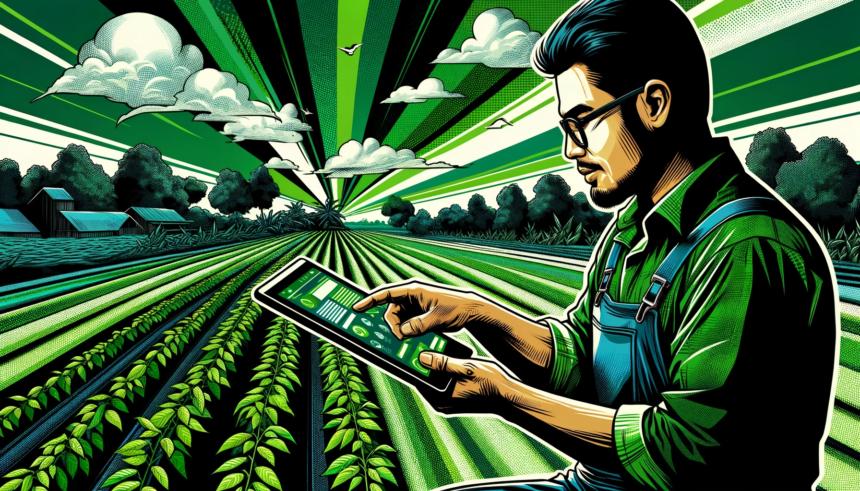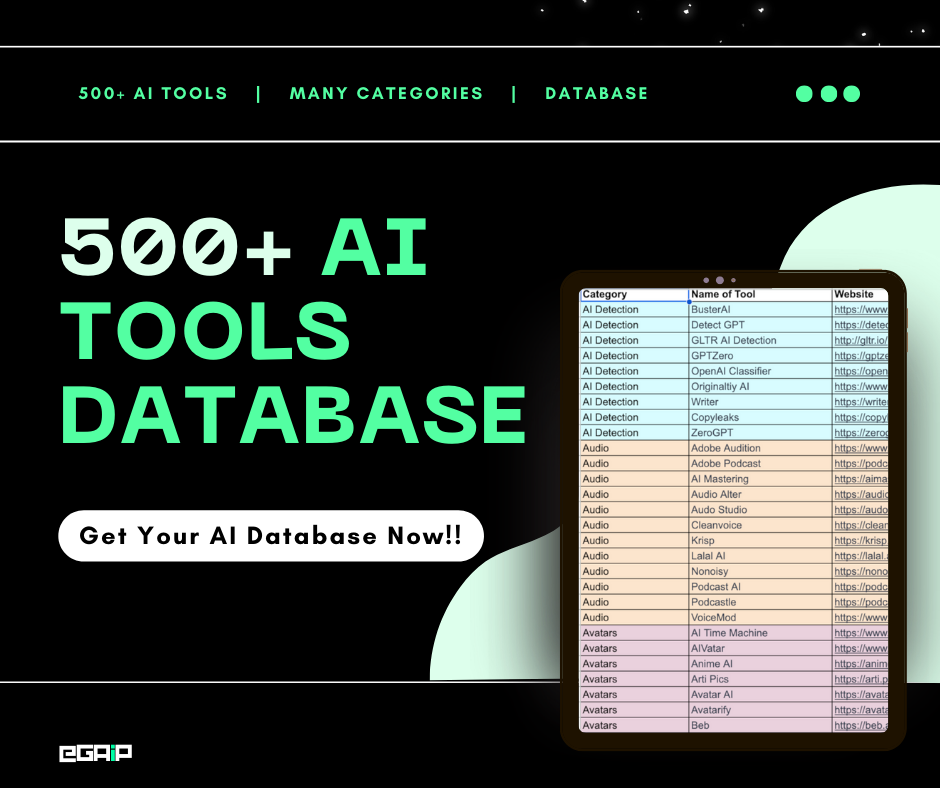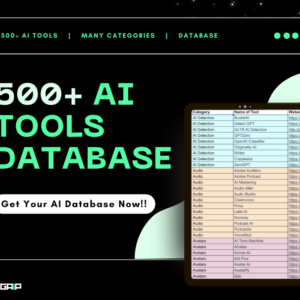Are you searching for the most effective ChatGPT prompts for farming?
In today’s world, about 60% of farms are turning to AI for help. That’s a lot! AI, like ChatGPT, is changing how farming works. But, it can be tricky to figure out the best ChatGPT prompts to use.
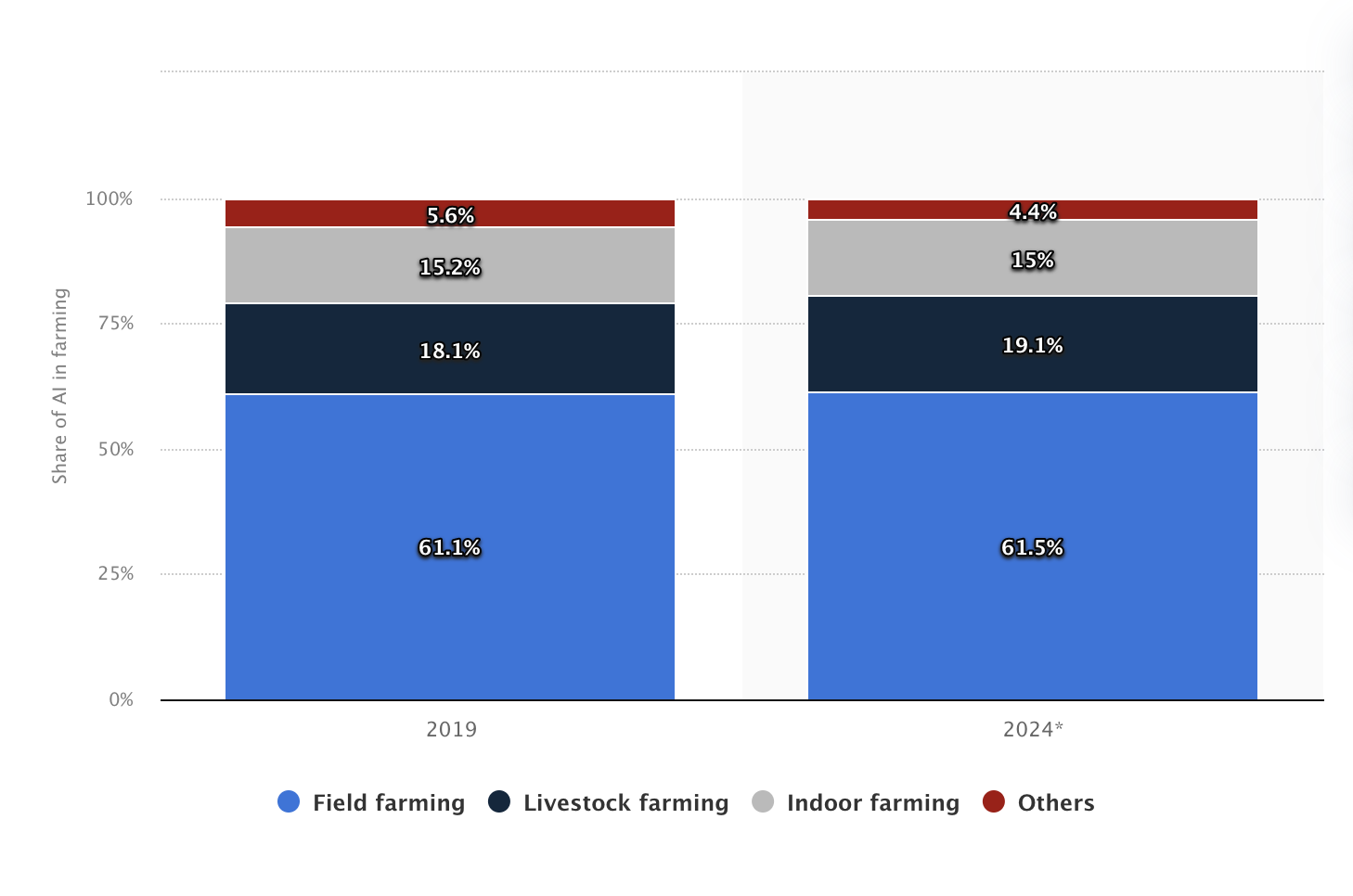
Don’t worry; we’ve got you covered. We’ve made a special list of the top ChatGPT prompts for farming. These prompts are perfect for farmers or anyone interested in agriculture.
They’re all about making farm work easier and smarter with AI.
Complete List of ChatGPT Prompts for Farming
This list will guide you to use ChatGPT best for your farm needs, save them or copy them for future use.
Also, don’t forget that you can use these prompts on almost any chatbot or ChatGPT alternative like Bard, Bing Chat, Claude AI, or Poe. You can also check out more prompts from our ultimate ChatGPT prompt list.
Prompts for Crop Management and Planning
1. “Develop a comprehensive crop rotation plan for a 100-acre farm focusing on sustainable practices. Include crops suitable for the local climate, soil type [specify], and market demands. Also, suggest environmentally friendly pest control methods.”
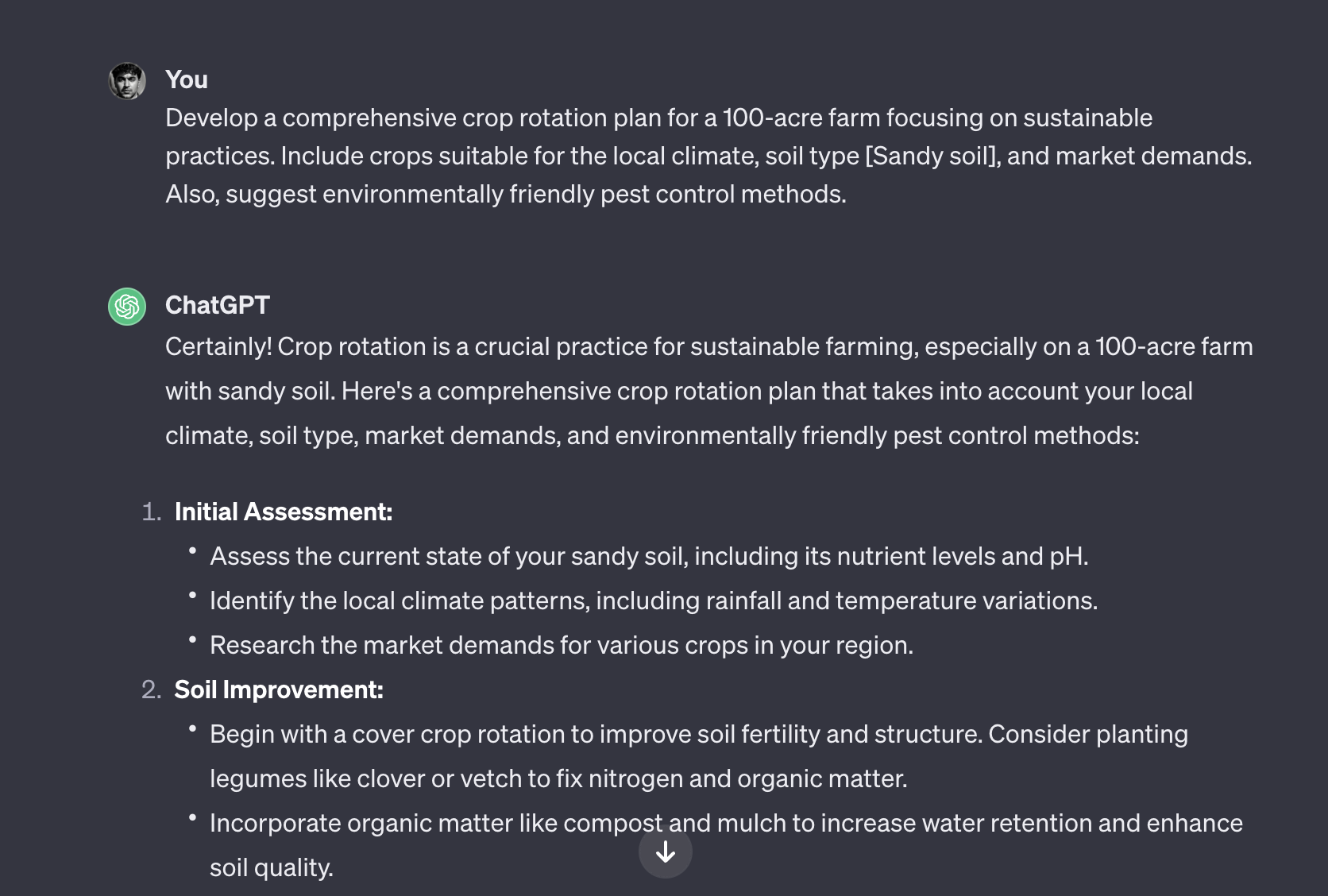
2. “Create a detailed guide for organic farming practices suitable for [specific crop type]. The guide should cover soil preparation, seed selection, natural fertilizers, pest control, and harvesting techniques.”
3. “Generate a weekly task scheduler for a vegetable farm. Include activities like soil preparation, planting, watering schedules, weeding, and harvesting. Tailor the schedule to the specific growth stages of each vegetable type.”
4. “List out steps for implementing precision agriculture techniques using AI and IoT devices in a mid-sized wheat farm. Include specific tools, data collection methods, and analysis techniques for optimizing yield.”
Prompts for Livestock Management
5. “Create a feeding schedule for a dairy farm with 50 cows. Include nutritional requirements, feeding times, and recommended feed types for different stages of a cow’s lifecycle.”
6. “Draft a comprehensive health monitoring plan for a poultry farm. Include daily checklists for signs of common diseases, vaccination schedules, and emergency response procedures.”
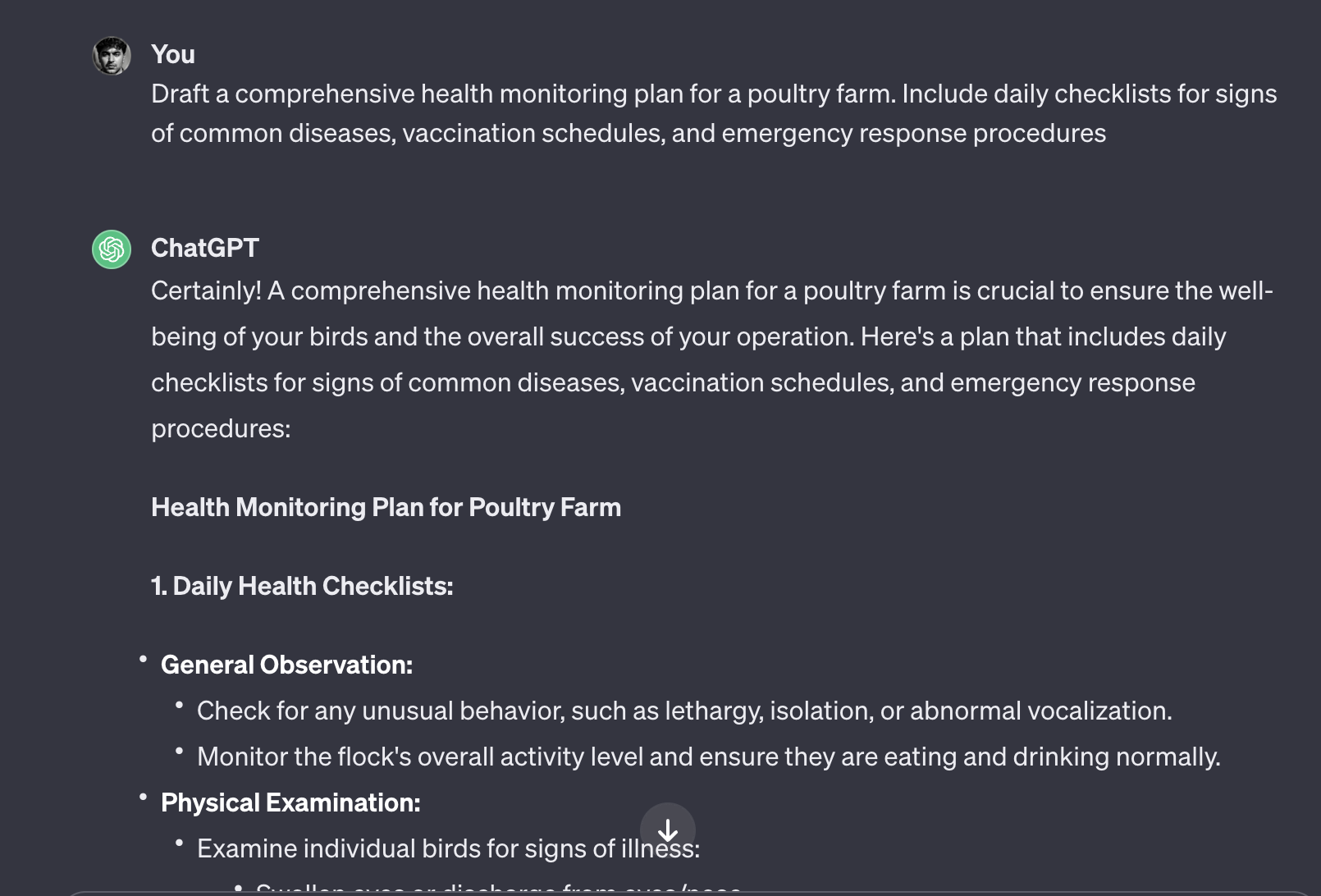
7. “Generate a guide on sustainable livestock farming practices, focusing on reducing environmental impact. Include pasture management, waste recycling, and water conservation strategies.”
8. “Develop a breeding plan for a herd of 100 sheep, focusing on improving wool quality. Include genetic selection criteria, breeding season planning, and lambing management techniques.”
Prompts for Farm Equipment and Technology
9. “Suggest a list of essential smart farming equipment for a high-tech greenhouse. Include tools for automated watering, climate control, and growth monitoring, with a brief description of each.”
10. “Create a maintenance schedule for heavy farm machinery like tractors and harvesters. Include regular checks, servicing intervals, and a checklist of critical components to inspect.”
11. “Design a plan for integrating drone technology into a vineyard for monitoring crop health and growth patterns. Include flight paths, data collection points, and analysis techniques.”
12. “Outline steps to convert a traditional farm into a smart farm using IoT devices. Focus on soil moisture sensors, weather stations, and crop health monitoring systems.”
Prompts for Sustainable Farming and Eco-Friendly Practices
13. “Generate a plan for setting up a rainwater harvesting system in a farm. Include calculations for storage capacity, catchment area, and distribution system design.”
14. “Create a comprehensive guide on implementing no-till farming in a 200-acre corn farm. Discuss the benefits, necessary equipment, and soil management techniques.”
15. “Develop a strategy for incorporating agroforestry into an existing farm. Suggest suitable tree species, layout design, and how it benefits crop yield and biodiversity.”
16. “Draft an educational guide on the benefits of crop diversity and polyculture farming. Include examples of compatible crop combinations and their advantages over monoculture.”
Prompts for Soil and Nutrient Management
17. “ChatGPT, act as a soil health expert. Analyze soil composition data from a 50-acre farm [include soil pH, nitrogen levels, phosphorus, potassium, and organic matter content]. Provide a detailed soil improvement plan with specific fertilizer recommendations, organic amendments, and a crop rotation strategy that enhances soil fertility.”
18. “Assume the role of an agronomist. Given the following soil test results [list soil nutrient data] from a vineyard, create a customized nutrient management plan. Include recommendations for both inorganic and organic fertilizers, application schedules, and techniques to prevent nutrient runoff.”
Prompts for Water Management and Irrigation
19. “Act as an irrigation specialist. Design a detailed irrigation system for a 100-acre mixed-crop farm [specify crops like tomatoes, corn, etc.]. Include types of irrigation systems (drip, sprinkler, etc.), layout plans, water source analysis, and a schedule that optimizes water use efficiency while ensuring adequate hydration for each crop type.”
20. “Serve as a hydrologist. Analyze rainfall patterns and water table data for a particular region [provide data]. Develop a water conservation strategy for local farms that includes rainwater harvesting, drip irrigation, and scheduling based on crop water requirements and climatic conditions.”
Prompts for Pest and Disease Management
21. “Function as a plant pathologist. Given these symptoms observed in a potato crop [list symptoms], identify potential diseases and pests. Provide an integrated pest management plan that includes biological control methods, safe chemical usage, and cultural practices to minimize future outbreaks.”
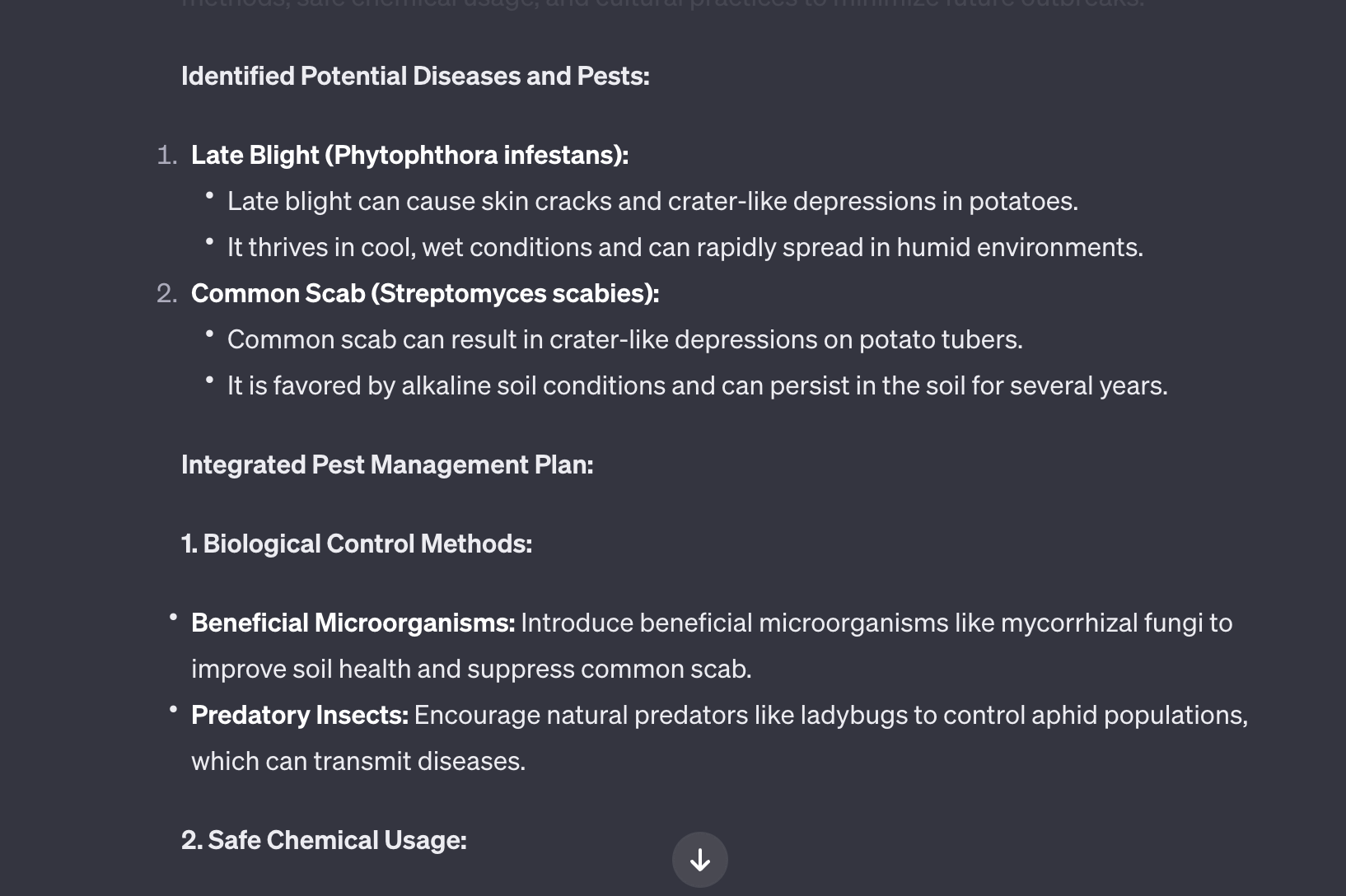
22. “Role-play as an entomologist. Considering an infestation of [specific pest] in a soybean field, suggest a comprehensive pest control strategy. Include environmentally friendly insecticides, introduction of natural predators, and crop rotation practices to reduce pest populations.”
Prompts for Sustainable and Organic Farming Techniques
23. “ChatGPT, become an organic farming consultant. For a farm transitioning to organic farming, provide a step-by-step guide. Address soil fertility management, pest control using organic methods, selection of suitable crop varieties, and certification processes.”
24. “Adopt the role of a sustainable farming expert. Given a farm’s profile [insert details like size, location, current farming practices], develop a detailed plan to shift to sustainable farming practices. Include cover cropping, agroforestry, reduced tillage, and biodiversity enhancement techniques.”
Prompts for Farm Financial Management and Marketing
25. “Act as an agricultural financial advisor. For a small-scale farmer [provide details about farm size, main crops, location], create a budget plan that includes cost-effective farming practices, potential revenue streams from crop sales, and investment in sustainable technologies.”
26. “Serve as a farm marketing specialist. Develop a comprehensive marketing strategy for a local farmer’s market. Include branding ideas, digital marketing tactics, community engagement plans, and strategies to highlight the uniqueness of locally-grown produce.”
Prompts for Greenhouse Farming and Controlled Environment Agriculture
27. “Act as a greenhouse design consultant for a 5-acre farm. Given these specifics [latitude, local climate data, primary crops to be grown], create a detailed plan for a greenhouse structure including type (glass, polyethylene, etc.), ventilation system, heating, cooling, and an automated watering system. Also, recommend a crop layout maximizing space and light exposure, considering crop compatibility and seasonal variations.”
28. “Act as a controlled environment agriculture (CEA) expert. For an urban rooftop farming project, provide a comprehensive guide covering hydroponic systems, selection of crops suitable for urban CEA, integrated pest management in a confined space, and strategies for energy and water efficiency. Include recommendations for community engagement and potential partnerships with local businesses for produce sales.”
Prompts for Agroforestry and Permaculture
29. “Assume the role of an agroforestry advisor. Develop a detailed plan for integrating tree planting into a 100-acre corn farm. Include tree species selection for windbreaks, soil improvement, and biodiversity enhancement. Provide guidance on spatial arrangement, impact on microclimate, and potential benefits for wildlife.”
30. “As a permaculture design consultant, create a comprehensive permaculture plan for a 10-acre farm. Focus on sustainable land use design that incorporates food forests, water management systems like swales and ponds, companion planting, natural building techniques, and renewable energy sources.”
Prompts for Climate Adaptation and Mitigation in Agriculture
31. “Function as a climate change adaptation specialist. For a coastal farm facing increasing risks from rising sea levels and saline intrusion, suggest strategies for crop selection, soil management, water conservation, and infrastructural changes to mitigate these risks.”
32. “Act as a carbon farming expert. Develop a plan for a 500-acre mixed-use farm to maximize carbon sequestration. Include practices like agroforestry, cover cropping, rotational grazing, and soil amendments. Provide an estimation of carbon capture potential and advice on joining carbon credit markets.”
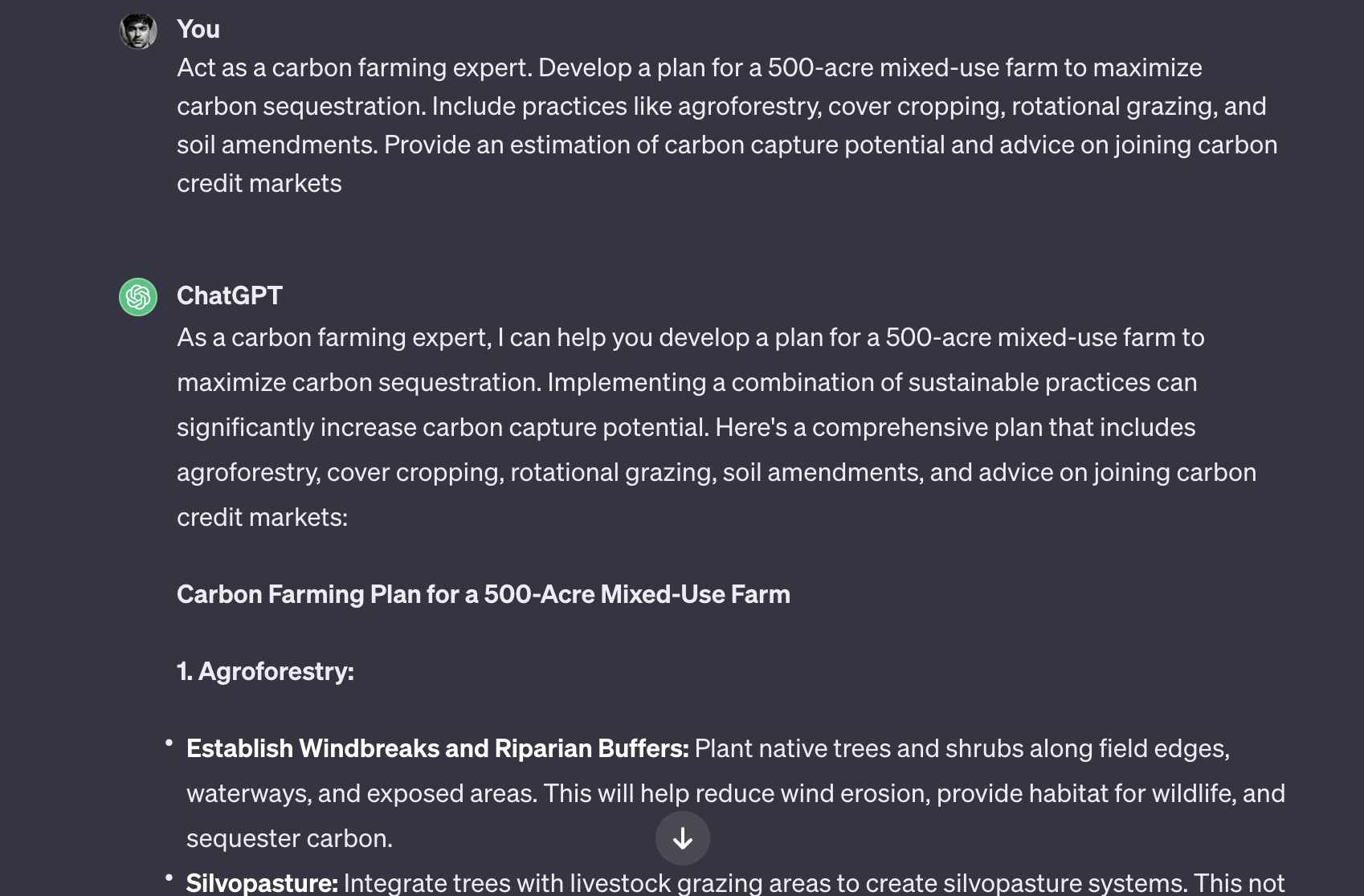
Prompts for Precision Agriculture and Data-Driven Farm Management
33. “Act as a precision agriculture technologist. Given a farm’s specifics [size, primary crops, existing technology usage], propose a comprehensive precision agriculture implementation plan. Include GPS field mapping, soil sampling, variable-rate fertilizer application, drone and satellite imagery analysis, and data integration techniques for yield optimization.”
34. “Assume the identity of a farm data analyst. Using data from soil sensors, weather stations, and yield maps from a 200-acre soybean farm, conduct a detailed analysis to identify patterns and insights. Provide recommendations for optimizing planting density, irrigation schedules, and input usage based on this data.”
Prompts for Agricultural Policy and Community Engagement
35. “Enact the role of an agricultural policy advisor. Analyze the current agricultural policies in [specify region or country] and their impact on small-scale farmers. Develop a policy proposal aimed at improving market access for these farmers, ensuring fair pricing, and promoting sustainable practices.”
36. “As a community agricultural extension officer, create a plan for a series of workshops and training sessions for rural farmers. Topics should include modern farming techniques, climate-resilient agriculture, financial literacy, and market access. Include a strategy for collaboration with local authorities and NGOs.”
Prompts for Vertical Farming and Urban Agriculture
37. “Act as a vertical farming consultant. Design a vertical farm system for an urban setting, considering factors like building constraints, lighting (artificial and natural), hydroponic or aeroponic systems, and crop selection suited for vertical growth. Include a business model focusing on local food supply chains.”
38. “ChatGPT, act as an urban agriculture expert. Develop a community urban farming project plan for a dense city area. This should include rooftop gardens, community plots, and indoor vertical farms. Address community engagement, education, crop selection, and distribution models for the harvested produce.”
Prompts for Agriculture and Food Security
39. “Assume the role of a food security analyst. Given the demographics and economic data of a developing region, create a plan to improve agricultural productivity and food security. Focus on sustainable practices, crop diversification, post-harvest storage solutions, and improving smallholder farmers’ access to markets.”
40. “Act as a consultant for an international NGO focused on agriculture and nutrition. Develop a program that integrates agriculture with nutrition education in [specify a region/country]. Include strategies for crop fortification, dietary diversification, and community-based nutrition awareness campaigns.”
Note
The above prompts have some parameters that you need to fill from your side inside the […] brackets if you want the outputs to be accurate. You can also add this line of prompt to any of the above prompts if you’re using ChatGPT 4 (Plus) to make it browse the internet for more latest data: “You can also browse the internet and fetch the most accurate, helpful and latest information or data.”
How You Can Use ChatGPT As a Farmer
As a farmer or someone involved in the agriculture sector, leveraging the capabilities of ChatGPT, an advanced language model by OpenAI, can significantly enhance various aspects of your farming operations.
According to us, we personally don’t know anyone using ChatGPT, yet we think it can provide valuable insights, advice, and assistance in numerous ways. Regardless, it’s also important to understand its limitations.
Here’s a brief look at how ChatGPT can be a resource for you as a farmer:
Advantages of Using ChatGPT in Agriculture
- Access to Information: ChatGPT can serve as a vast repository of agricultural knowledge. You can ask questions about crop varieties, soil health, pest control methods, or even the latest farming technologies. This AI tool can pull information from a large database, offering insights that might be hard to find elsewhere.
- Decision Support: For critical decisions like crop selection or pest management strategies, ChatGPT can help by providing data-driven suggestions. It can analyze trends and offer advice based on historical data and current agricultural best practices.
- Weather and Market Trends: Keeping track of weather patterns and market trends is vital for successful farming. ChatGPT can help summarize weather reports or market trends, making planning your activities easier, from planting to selling your produce with the help of different ChatGPT plugins.
- Language Translation: If you’re dealing with international markets or need information from foreign sources, ChatGPT can translate various languages, breaking down language barriers in accessing critical information.
- Educational Tool: For new farmers or those looking to expand their knowledge, ChatGPT can be an educational resource. It can explain complex agricultural concepts, provide tutorials on farming techniques, or offer advice on sustainable farming practices.
Limitations of ChatGPT for Farming
Before you start using ChatGPT, you must understand that there are certain things that ChatGPT can’t perform and lacks. Some of the most common limitations are:
- Lack of Localized Knowledge: While ChatGPT has access to a wide range of information, it might not always provide localized advice specific to your region’s soil type, climate, or local agricultural regulations.
- No Hands-On Assistance: ChatGPT can’t replace the practical, hands-on experience needed in farming. It can provide guidance, but the actual implementation of farming tasks requires human intervention and decision-making.
- Data Privacy Concerns: When discussing specific farming strategies or using personal data, there’s always a concern about data privacy. It’s important to be cautious about the information you share with AI systems.
- Need for Internet Access: To use ChatGPT, you need a stable internet connection, which might be a barrier in remote or rural farming areas.
- Generalized Advice: The advice given by ChatGPT is based on general data and might not always take into account the unique circumstances of your farm.
- Up-to-Date Information: ChatGPT’s knowledge is based on the data it was trained on, which may not include the most recent research or developments in the agricultural sector.
Practical Examples of ChatGPT Use in Agriculture
Imagine you’re dealing with a crop disease outbreak. You can describe the symptoms to ChatGPT, and it can assist by identifying potential diseases based on those symptoms.
It compares your description with a vast database of known crop diseases and their symptoms. Not only does it help in identification, but it can also suggest various management strategies, ranging from organic methods to more conventional treatments.
This kind of instant information can be crucial in preventing the spread of disease and minimizing crop loss.
Market advice is another area where ChatGPT shines. For example, if you’re unsure about the best time to sell your wheat crop, ChatGPT can analyze current market trends historical data, and even predict future market fluctuations to some extent.
This information can guide you to sell your produce when you can get the best possible prices, thereby maximizing your profit.
Understanding government policies, subsidies, and financial aid available for farmers can sometimes be overwhelming. ChatGPT can simplify these complex topics by providing concise and clear summaries of relevant policies and procedures.
It can guide you on how to apply for subsidies, what requirements need to be met, and even keep you updated on any changes in agricultural laws or policies.
While ChatGPT can’t physically help you in the field, its ability to provide quick, relevant, and comprehensive information makes it an invaluable digital assistant for modern farmers and agricultural professionals.
However, it’s important to remember that AI tools like ChatGPT should be used with real-world advice from local agricultural experts to ensure the best outcomes for your specific farming situation.
The End!
We hope the above list of prompts for farming and agriculture might help your farming journey.
However, we know that we are unaware of many things that might be left on our part, so, if you need ChatGPT prompts for a particular task related to anything, you can comment down your queries or use our Contact page to contact us.
Let us know if these prompts helped you as a farmer or if you’re in the agriculture sector.


